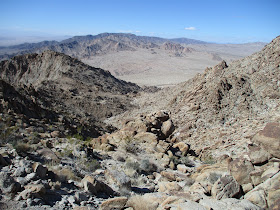Distance: 12.5 miles round trip on dirt road and cross country
Summit Elevation: 2829'
Prominence: 800' (estimated)
Elevation Gain: 2528'
Elevation Gain (in Empire State Buildings): 2.0
Round trip time: 5 hours
Recommended water: 96 oz.
Parking/Fees: $3 OC Parks on Black Star Canyon Road (maybe?)
Difficulty: Strenuous
Update 3/23/2025: After years of trying to reach this summit, I was able to clip my way there after many attempts. There was an offical benchmark stamped Baker.
Looking at forest service topo maps in the Black Star area, I noticed a mark for Peak 2829, and wanted to find out if there was an official government mark there or if it was just a triangulated virtual mark on the map. Satellite images showed an overgrown dirt road going half way up the peak before curving across the middle then back down. I thought I could take that road partially up the ridge, then bushwhack from there. Because the approach on Black Star Canyon Road is long, I decided to bike in to the base. It would also save me time on the way back.
The bike part went smoothly. I pedaled up the gently graded road about 1200' over 5 miles to the local ridge high point, then stashed a water bottle behind a sign for the return. I dropped about 200' toward the base of Peak 2829. I took a use trail away from the road into a grove of oaks where I could lock/hide the bike. After chaining it to a medium sized tree out of sight of the road, I put on long pants for the bushwhack horror to follow. The start of the overgrown road was relatively easy to follow at first. When the road curved south across the belly of the beast, I continued up the ridge as the brush grew more dense. A small rock outcrop on the first bump was a good perch to look down into the otherwise hidden side canyon where strange conglomerites grew. Here the brush turned into a snarl. I kicked, smashed, crawled, stumbled, cursed, bled, and hammered my way near the top of the false summit. The little hope I had that the upper ridge would offer some relief faded. It had taken almost an hour to move a quarter mile. I had 3/10 of a mile to go and only 95' of gain. The final approach on the ridge turned out to be a half mile thick hedgerow. I had not planned on the physical effort required and didn't have enough water to continue. The descent was just as brutal until I reached the bump. I got back and removed my long pants, sporting scratches on all exposed skin including my face. Studying the post mortem, I have to admire how impregnable this peak is. Surrounded by a thick moat of brush on 3 sides, and a cliff into Baker Canyon on the other. If I ever go back -- and I have no plans -- I'd explore the Baker Canyon approach or maybe the East Fork of Black Star Canyon. The bike ride back only took an hour and I estimate biking saved me two hours round trip. After this trip, the odds of an actual mark being up there are probably very low.






























